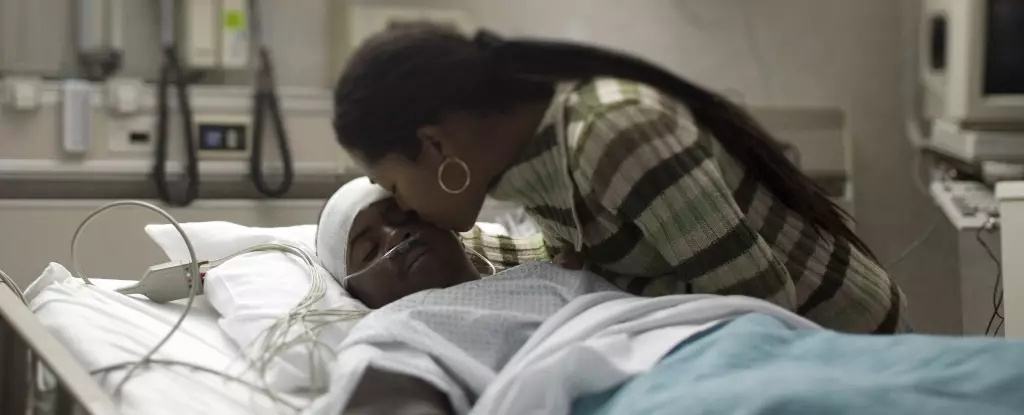Comatose patients represent one of the most enigmatic territories in modern medicine. Families are often trapped in a limbo filled with hope, fear, and uncertainty as they navigate the harrowing question: will their loved one awaken? The traditional metrics used to determine the prognosis for these patients are often fraught with ambiguity. However, researchers at Columbia University and New York-Presbyterian have ventured into uncharted territory, altering the landscape of how we perceive consciousness in states of severe unresponsiveness. This crucial exploration reveals the possibility that hidden layers of consciousness could exist, even when patients appear to be locked in a deep sleep.
Utilizing electroencephalography (EEG) scans, the research team discovered that traces of hidden consciousness could be observed when tests were conducted under unconventional circumstances—specifically, at night when a patient’s brain is ostensibly “asleep.” This breakthrough stems from the ability to detect sleep spindles, specific brain activity patterns that signify the functionality of areas responsible for consciousness. Unlike typical sleep patterns seen in healthy individuals, patients in comas do not engage in standard REM cycles. The emergence of sleep spindles signals that essential connections within the brain remain intact, invoking hope that these patients could still awaken.
What stands out in the Columbia study is the striking realization that the detection of these spindles may act as a precursor to recovery, potentially before the more complex cognitive motor dissociation (CMD) tests come into play. This suggests a paradigm shift in how we assess unconscious patients and underscores the urgent need for futher understanding of brain functionality.
The study monitored the electrical activity in the brains of 226 patients suffering from acute brain damage, across nightly EEG sessions, alongside CMD tests. In a remarkable revelation, it was determined that nearly 40% of unresponsive patients exhibiting both well-defined sleep spindles and CMD signs managed to regain consciousness before being discharged. This significant figure emphasizes the potential for recovery and warrants a change in how families and medical professionals approach the delicate issue of prognosis.
Additionally, more than three-quarters of these patients who once seemed out of reach of recovery regained notable neurological function within a year. This data throws a lifeline of hope to families who are often left grappling with despair and uncertainty regarding their loved ones’ futures.
Jan Claassen, a neurologist involved in this groundbreaking research, emphasizes the thrilling frontier we are now stepping into within the realm of neurocritical care. As we obtain better insight into the concealed aspects of brain function, we move closer to understanding the full capacity of consciousness. Families frequently inquire about the likelihood of their loved one awakening, and this newfound approach might just provide them with tangible answers instead of empty reassurances.
The potential therapeutic implications are profound. Researchers are now exploring ways to harness and even manipulate sleep spindle activity to boost the probabilities of awakening. Uplifting thoughts abound—if maintaining or even enhancing existing brain wave patterns could assist in improving unconscious states, the possibilities for recuperation and rehabilitation are monumental.
In a time when resources are strained and medical practices must balance hard science with human emotion, it is crucial that we remain sensitive to the experiences of families with comatose patients. Each moment spent in uncertainty can feel excruciatingly lengthy, and the emotional toll can be immense. However, with emerging research like that presented by Columbia University, it becomes increasingly clear that our understanding of consciousness is evolving. The discovery of hidden recovery mechanisms offers not just scientific potential but also renewed hope for families grappling with grief and uncertainty.
As we navigate this intricate landscape of the brain and consciousness, we must cultivate a compassionate approach that not only respects the potential for recovery but also recognizes the dignity of those who find themselves in such challenging circumstances.


Leave a Reply